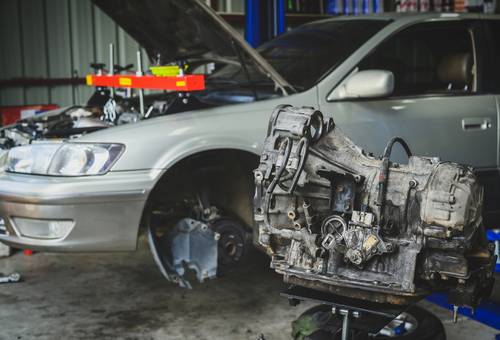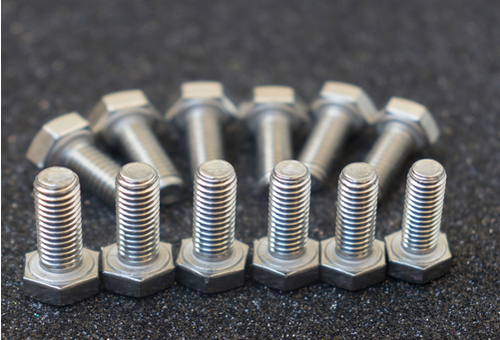
We have all been witnessing the decline of manual transmissions in new cars over the past decade or more. Some sources put the current ratio of manual vs. automatic transmissions at about 7 to 1 in favour of automatics; others put the ratio as high as 9 to 1 in favour of automatics.
Whatever the actual ratio is does not really matter. What does matter, however, is that mechanics in workshops all over the country are replacing automatic transmissions in increasing numbers. More to the point though, many mechanics all over the country seem to be struggling with increasing numbers of automatic transmissions that fail or develop issues almost immediately after installation. So what’s going on? Are automatic transmissions not as tough as they used to be, or are rebuilders of automatic transmissions getting it wrong more often than before?
The fact is that neither question can be answered with a simple “Yes” or “No”, and in this article, we will explain why, as well as look at some of the common mistakes we (sometimes) make when we order, install, and commission rebuilt automatic transmissions. Let us start with-
Here, we are not referring to the “nuts and bolts” of a transmission replacement; in fact, many of the problems that cause newly installed transmissions to fail have nothing to do with actual fasteners. In this context, we are referring to things like vehicle usage, and/or, software upgrades and mechanical modifications that might be present on the vehicle, sometimes without the current owner’s knowledge. Let us look at a practical example of a lack of information-
A customer presents his vehicle with a failed automatic transmission. He does not want you to diagnose and fix it- he asks you to replace the transmission with a rebuilt unit. So far so good- you note down the make and model, and order a rebuilt unit from a trusted local supplier of rebuilt automatic transmissions, who, it turns out, has several units available for immediate delivery. Just to make sure that you receive a suitable transmission, you also supply the rebuilder with the vehicle’s VIN.
Before you start work, you verify that the rebuilt transmission is suitable for that particular vehicle, so you remove the old transmission and install the replacement. You do everything by the proverbial “book”, including, at the end of the job, performing the required relearn procedure(s) so the vehicle can relearn shift points and other operational parameters. You test-drive the vehicle, and since the new transmission appears to be working normally (as expected), you hand the vehicle off to the customer.
However, a week later the customer returns, and he is not happy. He tells you that while he was driving to his holiday destination towing his new speedboat, the new transmission had started slipping on take-off, gearshifts had become harsh and unpredictable, and more often than not, the transmission missed some gearshifts. The customer also tells you that it is obvious (to him) that you must have done something wrong, and he now wants a replacement transmission or his money back- and he wants it today.
Most of us have had such conversations, and we all know that such discussions can be very uncomfortable and extremely difficult to conclude amicably, but we are professionals after all, and usually stand our ground by insisting that we did everything by the book. However, the problem with standing one’s ground is that it is usually exceedingly difficult to prove to an irate customer that we did indeed, do everything by the book. Therefore, the rebuilder must have made some sort of mistake when he assembled the now-ruined transmission.
But did he, though? Maybe he did because mistakes during rebuilding do happen, but there is one other explanation we might consider. For instance, did we provide the rebuilder with enough relevant information when we ordered the replacement transmission? We typically obtain as much information when we can when dealing with say, drivability issues, but do we always do the same thing for other types of issues? Maybe not, so let us look at this from another angle-
Not many of us repair or rebuild automatic transmissions for a living, so it is easy to forget that a standard automatic transmission in a standard application is designed, built, and programmed to cope with a rather narrowly defined set of loads. Unlike many, if not most manual transmissions that can exceed loads and torque inputs that exceed their intended limits by huge margins, some automatic transmissions can, and do fail when their limits are exceeded* by as little as 10 to 15%.
* Note that for the purposes of this discussion, we will ignore both CVT mechanisms and automatic transmissions that are known to be unreliable and prone to failure even if they are used within their design limitations.
So, how could information have prevented the situation as described above? Let us look at the two most pertinent questions we should be asking customers when they want their automatic transmissions replaced-
Does the vehicle ever tow anything?

In our example, the customer mentioned a new speedboat, so two questions come to mind. The first question involves the boat’s weight, and the second involves the vehicles’ rated capacity to tow things like speedboats.
We cannot be responsible for how our customers use their vehicles, but if the boat’s weight had exceeded the vehicle’s capacity to tow it, even by a small margin, several things could have happened, including, but not limited to the following-
Is the vehicles’ engine management programming standard?
We need not delve into the reasons why some vehicle owners chose to install things like performance chips or enhanced tuning programmes, but what we can say is that in many cases, changes to engine and fuel management software/programming are not always visible or apparent on vehicles when we do routine service and maintenance jobs. We can also say that in some cases, a vehicles’ owner might not be aware that the programming on his vehicle is not standard, and/or that his transmission had been adapted to cope with the additional torque an enhanced or altered engine management program produces. This is especially true and/or relevant on used or second-hand vehicles.
So what do we do if the owner does not know? One way to find out is to use a scan tool to check and verify the calibration version/number of both the engine and transmission management software. Different scan tools do this in different ways, but once you have a calibration number or version, you can use various OEM resources to check what you find against the vehicle's VIN. You might have to purchase a subscription to access this information on almost all OEM resources, but not doing this could mean the difference between a successful transmission job and a potentially expensive comeback.
Other information that could be useful to transmission rebuilders includes anything that could affect the operation of the transmission in terms of both operation and durability. This additional information could include details on exhaust system modifications, changes to wheel sizes (however small), changes to final drive ratios and even mechanical modifications to the engine that change the engine’s power delivery characteristics.
The latter point includes the use of non-standard turbochargers, non-standard air filters, or changes to cylinder bore and valve diameters that change the engine’s volumetric efficiency. Since an improved volumetric efficiency typically produces more power, the shift points on a standard automatic transmission will almost certainly differ from the shift points on a similar, but standard and unmodified vehicle. The reason for this is that (among other parameters) shift points are based on engine loads relative to engine speeds, and as a result, a mechanically modified engine might produce shift points earlier than an unmodified engine would, which brings us to-
While transmission rebuilders cannot compensate or account for every possible modification on all vehicle makes and models under all circumstances, the fact is that all competent and experienced transmission rebuilders can do much to prevent automatic transmissions from failing prematurely on non-standard vehicles.
Therefore, provided a transmission rebuilder has all the relevant information, that rebuilder can replace standard clutches, bands, and the torque converter with heavy-duty versions, or make suitable modifications to the pressure pump and line-pressure regulating system, or modify the valve body or shift solenoids to handle higher fluid pressures and flow rates. In some cases, a rebuilder might also recommend the installation of an additional fluid cooler, but the point is that a transmission rebuilder can do none of these things if he does not know what he is dealing with, or how the vehicle is sometimes used, even if it is standard in all respects.
So in practice, a transmission rebuilder might do a perfect job of rebuilding a complicated automatic transmission, and you might do a seemingly perfect job of installing it into a vehicle, but if you, as the technician, don’t know what you don’t know about that transmission, the job might still end up as an expensive comeback. Let us look at some of the things we do sometimes get wrong, even if it is inadvertently-
In many cases, we do not always notice things like connectors on a rebuilt transmission that have broken, bent, or even missing terminals and/or locking tabs that do not engage with vehicle harness connectors as well as they should. On two occasions, this writer was obliged to remove a newly installed transmission; once because the connector on the transmission would not accept the vehicle’s harness connector because of (unnoticed) damage to the transmission’s connector, and a second time when damaged pins in the transmission connector caused communication issues with the engine ECU.
Some particularly problematic transmissions in this regard include the RFE series transmissions on many late model Chrysler vehicles, as well as Ford’s E4OD and 4R100 transmissions. The problem with these transmissions is that when they are removed from a vehicle, the central divider in the vehicle’s connector breaks off in the connector on the transmission casing, where it remains stuck and very difficult to remove without damaging the connector.
Thus, when you receive one of these transmissions from a rebuilder, there is a high likelihood that the connector on the transmission still contains the central divider from a vehicle harness connector, which will make it impossible to connect the vehicle’s harness to the transmission. Worse, though, trying to remove the obstacle in the connector very often damages some pins in the connector, and trying to fix the damaged pins often causes pins to break off, with predictable communication issues as a result.
One other issue to be aware of is the fact that on many late model Ford transmissions, the connector attaches to the casing with a small bolt that passes through the connector. Over tightening this bolt typically deforms the connector, which invariably leads to poor connections and ECU communication issues. In fact, Ford’s 5R110W transmission is particularly susceptible to poor connections caused by the over-tightening of the retaining bolt, so exercise extreme care when you make connections on this transmission.
Regardless of which transmission you are replacing, it is always a good idea to check/inspect all connectors on the transmission for evidence of broken, damaged, corroded, or otherwise unserviceable connectors on both the transmission and the vehicle harness before you install the unit. Damaged connectors cause at least 50% of failures and issues on newly installed automatic transmissions, so pay particular attention to all relevant connectors and their fairly complicated locking mechanisms while the transmission is still outside the vehicle.

We all know that it is not particularly difficult to install and bolt down an automatic transmission, but then again, sometimes, it is also not very difficult to screw the wrong bolt into the wrong hole when we are working under severe time constraints.
This is of course no excuse to get things wrong, but in many, if not most cases, no harm comes from starting the wrong bolt into the wrong hole. However, in some cases, and particularly on late model Toyota transmissions, putting the wrong bolt into the wrong hole could destroy the torque converter lock-up clutch.
This could happen on many other transmissions as well, but from personal experience, this writer can confidently state that late model Toyotas are the most susceptible to this kind of mistake. The issue revolves around the fact that some late model Toyota transmissions require a washer between the bolt head and the flexplate, while others do not.
Thus, if you are installing a Toyota transmission that does require washers, and you do not insert them between the bolts and the flexplate for whatever reason, the bolt will bottom out against the torque converter casing. You will almost certainly not notice this when you torque the bolts down, but when the bolts bottom out, they dent the torque converter's casing enough to damage or break the lock-up clutch linings. The only remedy for this is the removal of the transmission and the replacement of the torque converter, so pay particular attention to washers, and be sure to insert them when required.
Another issue with Toyota torque converter bolts is the fact that they are not the same. There is one bolt whose head incorporates a small (easy-to-overlook) shoulder that aligns the holes in the flex plate with the holes in the torque converter. Therefore, this bolt, which is usually a different colour, must be inserted before the others to eliminate the possibility of cross-threading any of the torque converter bolts.
One other thing to keep in mind is this: always regard torque converter bolts as single-use fasteners, regardless of the application or transmission. These bolts transmit enormous loads, and the combination of high torque settings and extremely high torsional loads can, and often do, cause these bolts to stretch beyond acceptable limits. Stretched bolts cannot only not be torqued down correctly; stretched bolts are also severely weakened, and can therefore fail at any moment while they are loaded.
To avoid this very expensive kind of failure, simply replace all torque converter bolts with new bolts of the correct grade every time you install an automatic transmission, which leaves us with this-
While we did mention shift point relearn procedures at the beginning of this article, the importance of performing these procedures correctly cannot be overstated. In many cases, and especially on Toyota applications, a single momentary engine flare-up between two gears under even moderate acceleration is sufficient to destroy a direct clutch or damage the torque converter lock-up clutch linings.
Therefore, if any relearn procedure does not initiate or complete, do not drive the vehicle to see if "things settle into place"; they won't. So instead of potentially ruining a rebuilt transmission, do yourself a favour and retrace your steps to check every wiring connection, every ground connection, every mechanical linkage, and for that matter, everything else you touched during the replacement procedure before attempting to repeat the relearn procedure.
Modern automatic transmissions are entirely unforgiving of mistakes made during rebuilding, installation, and commissioning. Anybody can make a mistake, though, but the trick to performing successful automatic transmission replacements is to make sure the mistake is not yours on the one hand and to be as sure as you can be that nobody else's mistake is left unresolved before you install a transmission, on the other hand.